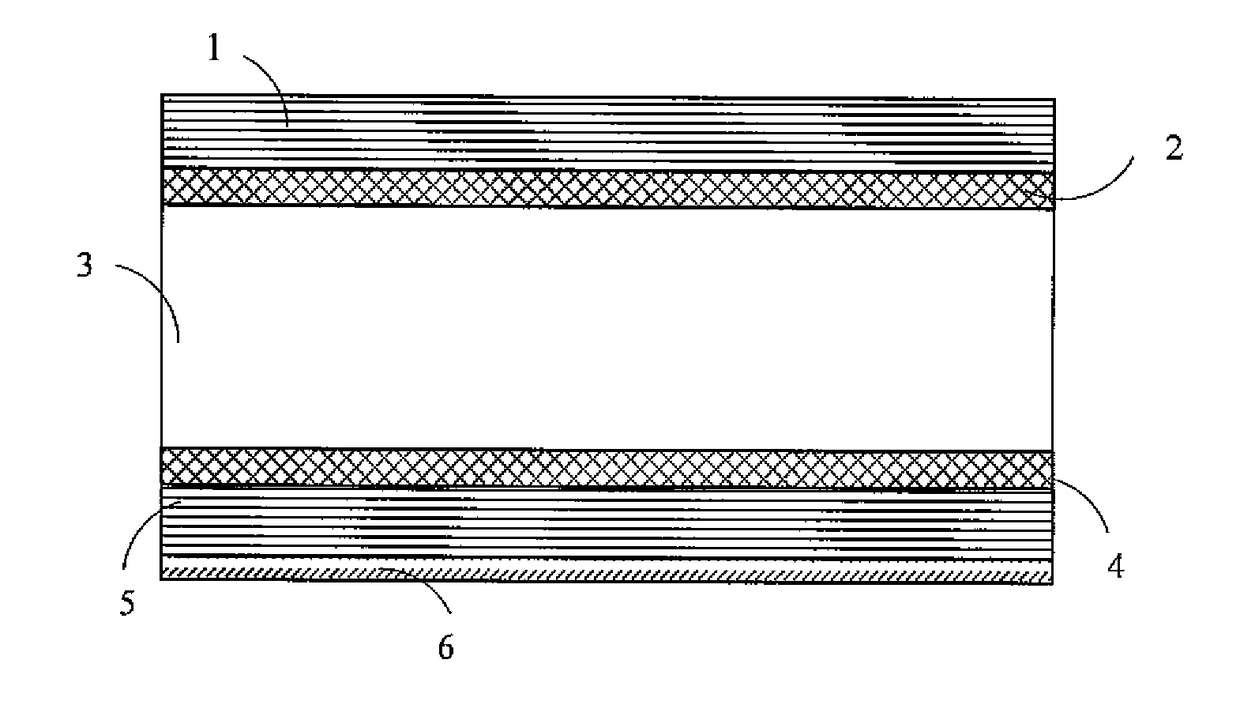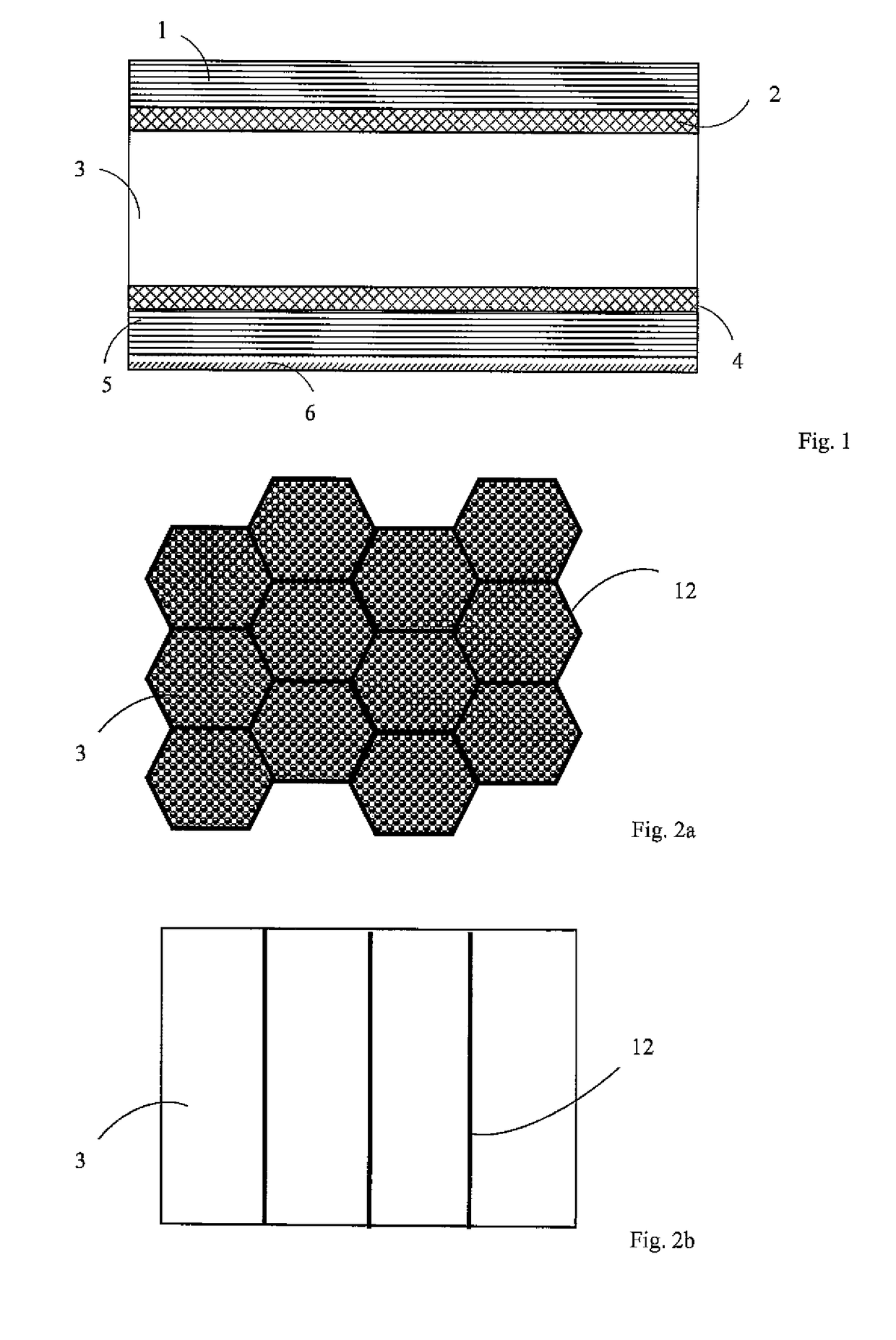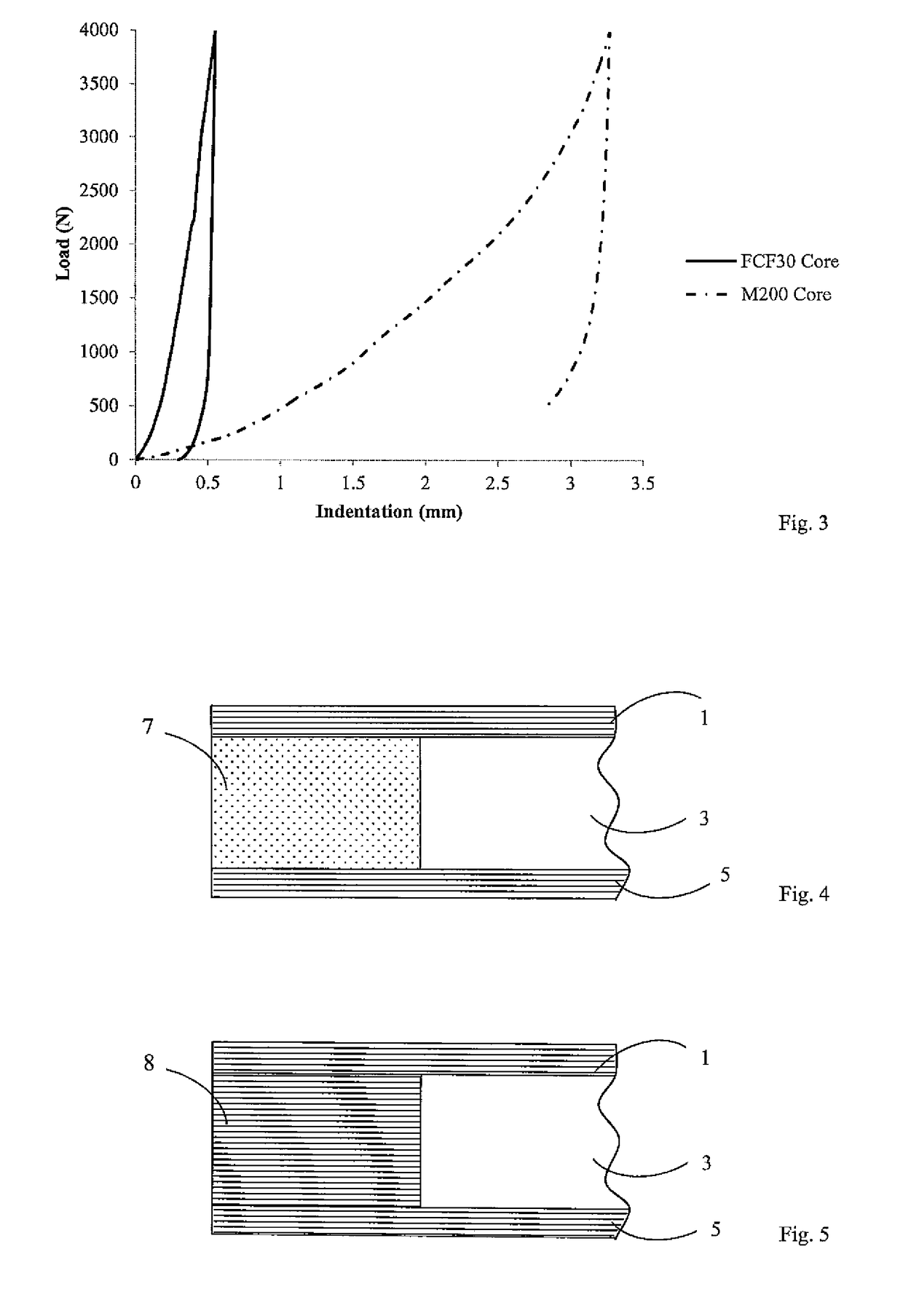A composite sandwich structure
a composite sandwich and base panel technology, applied in the direction of rigid containers, synthetic resin layered products, packaging, etc., can solve the problems of reinforcement material fracture, etc., and achieve the effect of improving resistance, reducing the risk of fracture, and improving strength and stiffness of the panel
- Summary
- Abstract
- Description
- Claims
- Application Information
AI Technical Summary
Benefits of technology
Problems solved by technology
Method used
Image
Examples
Embodiment Construction
[0056]FIG. 1 shows a composite sandwich base panel comprising an upper surface layer 1, and lower surface layer 5, which sandwiches a composite foam core 3. Either side of the core is a barrier layer, 2 and 4. The entire panel is then surrounded by a plurality of external edge components (not shown). For the regions where the edge component will be attached to the panel, there may be a change in the local material composition of the composite core 3, and / or a change in the local geometry of the peripheral region. A wear layer 6 may be bonded to the lower surface layer 5.
[0057]Depending on the manufacturing process used, some embodiments of the invention include a cellular structure incorporated into the composite foam 3. FIG. 2A is a horizontal cross section of a hexagonal cellular structure, 12, that is incorporated into the composite foam core 3 and FIG. 2B is a vertical cross section of a hexagonal cellular structure, 12, that is incorporated into the composite foam core 3. Simil...
PUM
| Property | Measurement | Unit |
|---|---|---|
| Fraction | aaaaa | aaaaa |
| Fraction | aaaaa | aaaaa |
| Fraction | aaaaa | aaaaa |
Abstract
Description
Claims
Application Information
 Login to View More
Login to View More - R&D
- Intellectual Property
- Life Sciences
- Materials
- Tech Scout
- Unparalleled Data Quality
- Higher Quality Content
- 60% Fewer Hallucinations
Browse by: Latest US Patents, China's latest patents, Technical Efficacy Thesaurus, Application Domain, Technology Topic, Popular Technical Reports.
© 2025 PatSnap. All rights reserved.Legal|Privacy policy|Modern Slavery Act Transparency Statement|Sitemap|About US| Contact US: help@patsnap.com



